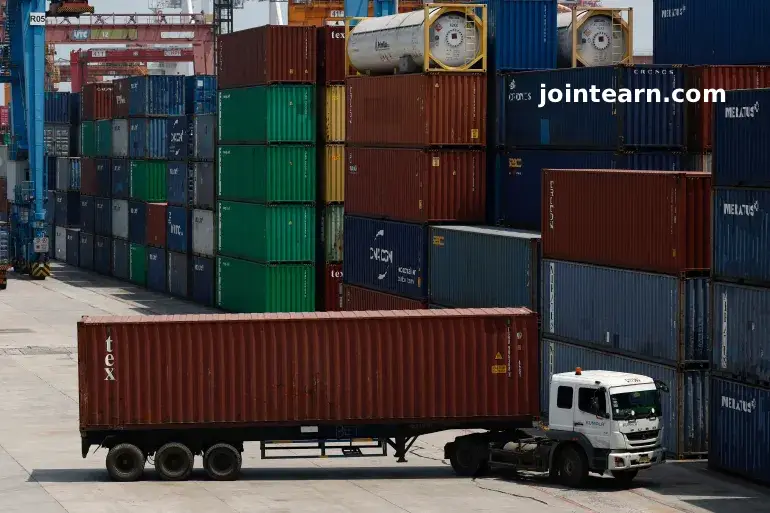
Southeast Asia, once hailed as a major beneficiary of Donald Trump’s first trade war with China, is now facing strong economic headwinds unleashed by the same man’s return to the White House. The region’s manufacturing-driven economies, long reliant on the “China Plus One” strategy, are being squeezed between renewed US-China trade tensions and a surge of Chinese exports flooding their markets.
From Trade War Winners to Tariff Targets
When the US-China trade war began in 2018, Southeast Asia emerged as one of its biggest winners. Companies fleeing high tariffs on Chinese goods relocated production lines to Vietnam, Thailand, Indonesia, and Malaysia. The shift brought in new investments, job creation, and technology transfers that fueled rapid growth across the region.
However, seven years later, the story has changed dramatically. President Donald Trump’s trade policy—centered again on tariffs and “America First” protectionism—is inflicting fresh pain on the ASEAN economy. While the region still benefits from diversified supply chains, its export-dependent markets are now under pressure from both Washington’s tariffs and Beijing’s overcapacity.
“Southeast Asia has been trying to walk a tightrope—balancing relations with the US and China, both of which are crucial partners,” said Jayant Menon, senior fellow at the ISEAS–Yusof Ishak Institute in Singapore. “But with Trump back, that balance is harder to maintain.”
Trump’s “Liberation Day” Tariffs Shake ASEAN Economies
In April 2025, Trump introduced what he called “liberation day” tariffs—a sweeping series of import duties targeting countries he accused of exploiting US trade policy. Cambodia faced a staggering 49 percent tariff, Laos 48 percent, and Vietnam 46 percent. Even long-standing US allies weren’t spared, with Thailand hit with 36 percent and the Philippines 17 percent.
The Trump tariffs 2025 campaign jolted the Southeast Asia trade war landscape. Countries scrambled to negotiate one-on-one deals with the US to lower duties. Most succeeded in reducing tariffs to between 10 and 20 percent, but Myanmar and Laos still face a punishing 40 percent rate. Key sectors such as steel, aluminum, and auto parts remain heavily taxed.
In July, the White House escalated matters with an additional 40 percent tariff on “transshipments”—goods rerouted through Southeast Asia to bypass earlier tariffs on Chinese products. The move directly targeted the China Plus One strategy that had made ASEAN a manufacturing hub.
“Transshipment tariffs put emerging markets like Vietnam and Thailand in Washington’s crosshairs,” said Nick Marro, lead global trade analyst at the Economist Intelligence Unit. “It’s a sign the US wants to close loopholes that allowed Chinese goods to enter indirectly.”
Economic Growth Forecasts Fall Amid Trade Uncertainty
The consequences of these trade disruptions are already visible. The Asian Development Bank (ADB) recently slashed its ASEAN growth forecast for 2025 from 4.7 percent to 4.3 percent, citing “a new global trade environment shaped by tariffs and shifting supply chains.” Its 2026 outlook remains subdued at 4.3 percent as well.
Analysts warn that if tariffs persist or expand, Southeast Asia’s export-driven economies—especially Vietnam, Malaysia, and Thailand—could face production slowdowns, job losses, and lower foreign investment inflows.
At the same time, China’s growing presence in regional trade is complicating recovery prospects.
Rising Chinese Exports Add New Pressure
While Southeast Asia battles US tariffs, it is also grappling with an influx of cheap Chinese goods. According to Chinese customs data, exports to ASEAN rose 12 percent year-on-year in 2024 to $586 billion, with another 14.7 percent increase recorded in the first nine months of 2025. Total bilateral trade between China and ASEAN reached a record $776.7 billion by September.
In contrast, Chinese exports to the US fell nearly 17 percent during the same period, reflecting how Beijing is redirecting trade flows toward neighboring markets. Experts believe this pattern is both a symptom and a consequence of the ongoing US-China trade tensions.
“Exports from China to Southeast Asia have risen in step with exports from Southeast Asia to the US,” Menon explained. “It suggests some goods are being diverted through ASEAN countries as part of a trade re-routing strategy.”
Indeed, ASEAN’s exports to the United States surged to $352 billion in 2024—up 13 percent from the previous year and nearly double the pre-trade-war figure from 2017.
The Complex Role of the “China Plus One” Supply Chain
The “China Plus One” model, once hailed as a diversification success, now faces a credibility test. Many Chinese manufacturers have established plants in Vietnam, Thailand, and Malaysia to circumvent tariffs while maintaining access to global markets. However, Washington’s crackdown on transshipments and re-exports threatens to undermine the model’s long-term viability.
According to a survey by consultancy GLG, 66 percent of Chinese exporters are now seeking alternative markets beyond the US, with 71 percent citing ASEAN as their preferred destination. This trend is turning Southeast Asia into both a trade corridor and a final consumer market for Chinese goods.
“Some exports are indeed being re-routed, but many are now staying in the region,” Menon said. “Southeast Asia is becoming a key destination in its own right, not just a stopover.”
Local Industries Fear Chinese “Dumping” Practices
As Chinese exports pour into ASEAN, concerns over market saturation and unfair competition are growing. The depreciation of the renminbi has made Chinese goods cheaper abroad, exacerbating fears of “dumping”—selling products below market value to undercut local industries.
“We’ve seen increasing anxiety in governments from Vietnam to Indonesia about a potential flood of Chinese goods,” said Marro of the EIU. “It’s not just high-tech sectors like smartphones or electric vehicles. It also includes steel, textiles, and other core industries.”
Such dumping practices could destabilize Southeast Asia’s domestic manufacturers, many of which are still recovering from the pandemic-era downturn. Yet, taking retaliatory action against China carries its own risks.
“A lot of ASEAN countries don’t want to accuse China of dumping because their economies benefit from being part of these supply chains,” said Chris Beddor, deputy director of China Research at Gavekal Dragonomics. “They want to capture a slice of the shifting production.”
ASEAN’s Balancing Act Between Washington and Beijing
The renewed Southeast Asia trade war has exposed ASEAN’s greatest challenge: maintaining neutrality between the world’s top two superpowers. While Washington remains a crucial security partner, China is by far ASEAN’s largest trade ally.
Instead of taking a unified stance, ASEAN members have adopted a fragmented approach—negotiating separately with the US rather than as a collective bloc. This approach aligns with Trump’s preference for bilateral deals but undermines ASEAN’s regional leverage.
“This is a result of ASEAN’s passive ‘not choosing sides’ strategy,” said Ian Chong, political scientist at the National University of Singapore. “They believed they could benefit from both powers courting them, but now they’re being squeezed from both ends.”
Outlook: More Tariffs Ahead?
Looking ahead, experts warn that the region’s trade troubles may only worsen. The US and China have yet to finalize a new tariff deal, and Trump’s unpredictability leaves markets on edge.
“My big fear is that this is not the end, but the beginning of more tariff hikes,” Menon cautioned. “Trump has been clear about two things—he loves tariffs and he wants to reduce bilateral deficits. I don’t think he can be stopped.”
For now, Southeast Asia continues to tread carefully, seeking to preserve trade ties with both superpowers while protecting its own economic interests. But as global trade patterns shift and protectionism rises, the region’s once-celebrated China Plus One strategy may no longer shield it from the storms unleashed by the US-China trade war.


Leave a Reply